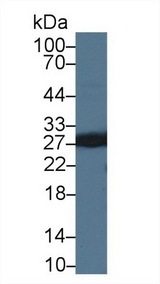
Symptoms that are highly suggestive of MOG-Ab ON include bilateral and recurrent episodes of ON especially in the setting of steroid responsiveness and steroid dependence. MOG ON can be associated with rapidly progressive and severe vision loss which may or may not recover.Ĭommonly reported other neurologic signs and symptoms include myelitis (e.g., paralysis and paresthesia) as well as encephalopathy, seizures, incontinence, and dysarthria. MOG ON episodes are often recurrent and the presentation with MOG antibody at the first attack had a positive predictive value on the presentation of subsequent attacks. SignsĪcute unilateral or bilateral, steroid responsive, recurrent episodes of ON are the hallmark of MOG-Ab ON. Bothe NAION and MOG ON may present with optic disc edema and peripapillary hemorrhage but NAION is much more commonly seen in older, vasculopathic patients compared to MOG-Ab positive ON which is seen in younger and healthier adults. Although MOG ON in older patients has some overlapping features consistent w/ non-arteritic anterior ischemic neuropathy (NAION) usually the differentiation can be made clinically or radiographically. Moderate to severe optic disc edema is a classic differentiating feature of MOG ON from MS and other forms of ON seen in up to 80% of patients. Complement deposition has also been seen in neuroimaging studies during acute attacks of MOG-Ab ON.

Disease-causing MOG antibodies are IgG1, which are known to activate the classic complement pathway. MOG protein is found on the surface of oligodendrocytes and known to bind to C1q, IgG Ab’s, DC-SIGN, a c-type lectin receptor expressed on the surface of dendritic cells and macrophages, rubella virus, and nerve growth factor. In addition, human MOG-Ab’s isolated from patient serum do not bind to MOG proteins expressed in rodents, therefore an in vivo study of the pathogenic role of these proteins has not been completely established. The pathophysiology of MOG ON is incompletely understood and the precise mechanism of MOG-Ab remains ill defined. There was no association between MOG-Ab ON and other autoimmune disorders and MOG ON is not typically associated with oligoclonal bands, a test specific for MS. One study found that 50% of pregnant women with MOG-ab’s developed their first episode of MOG-ON during or shortly after pregnancy. Other studies have shown contradictory associations between sex and MOG ON. Children with MOG ADEM had up to an 80% chance of developing MOG ON in adolescence or adulthood in one study. In contrast to NMOSD which is more frequently seen in African and Asian ancestry. MOG ON can be seen in any age, any ethnicity, and in either gender. There is wide variability in the epidemiology, severity of acute vision loss, extraocular neurologic deficits, and prognosis seen in various different studies of MOG however.

MOG related ON may be associated with certain HLA haplotypes. Children less than 9 years old who are positive for MOG-Antibodies (Ab) more frequently present with acute disseminated encephalomyelitis (ADEM) that may be relapsing or recurrent and may present with ON later in life. Although ON is the most common symptom in MOG-Ab seropositive disease it can present with acute disseminated encephalomyelitis, myelitis, or an NMOSD like presentation. ON in MOG however is often “atypical” and may be markedly steroid responsive, bilateral rather than unilateral, and may be associated with optic disc edema rather than a retrobulbar ON. Typical optic neuritis (ON) presents with acute, unilateral, onset of variable visual acuity/visual field loss, retrobulbar pain (worse with eye movement), loss of color vison, a relative afferent pupillary defect (RAPD), and a normal fundus exam (retrobulbar ON). Myelin Oligodendrocyte Glycoprotein (MOG) Optic Neuritis is an antibody mediated demyelinating disease of the central nervous system (CNS) that is a distinct entity from other demyelinating processes of the CNS such as Multiple Sclerosis (MS) or AQP4-Ab-associated neuromyelitis optica spectrum disorder (NMOSD).


 0 kommentar(er)
0 kommentar(er)
